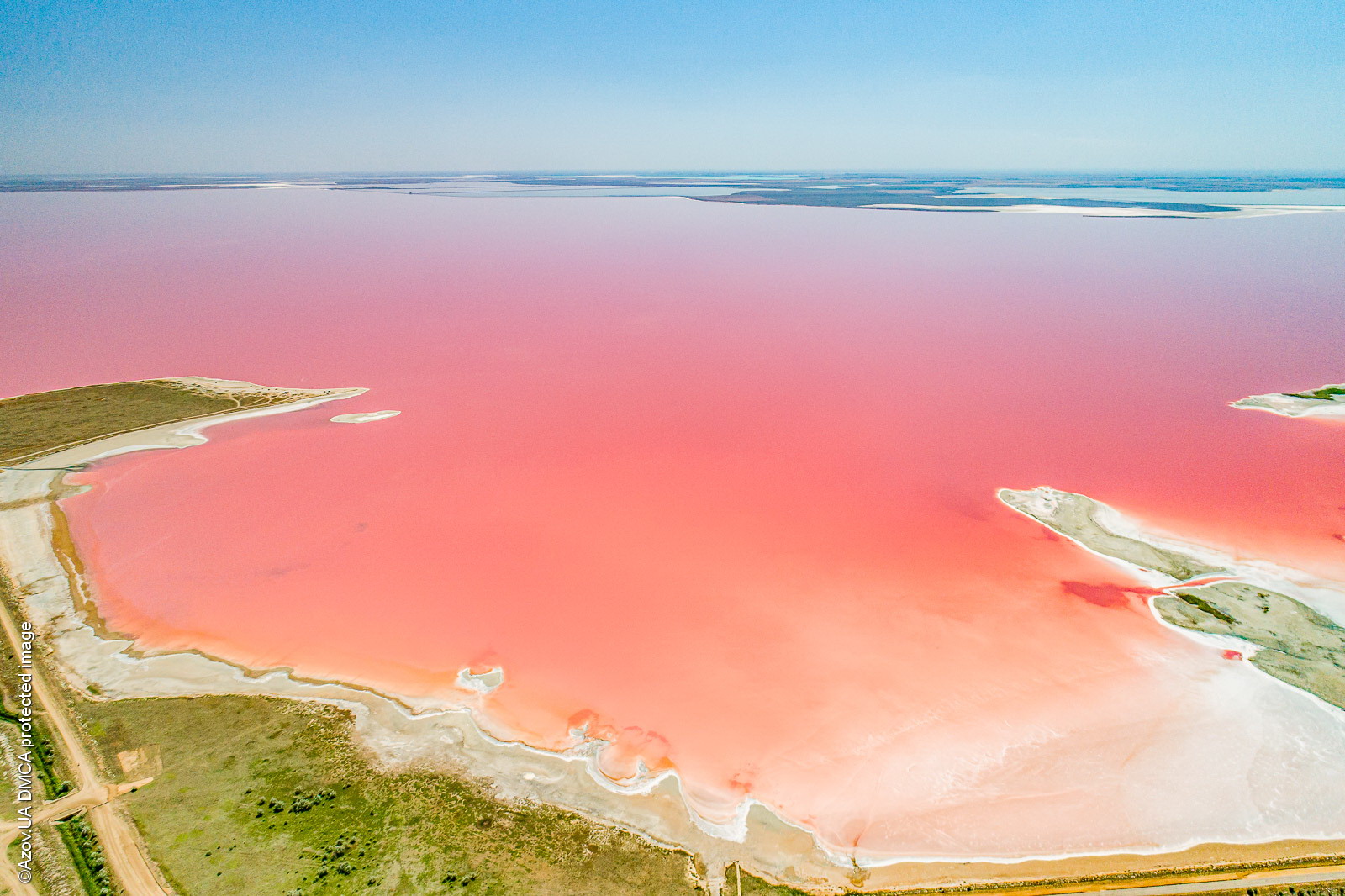
The Sivash: A Key Strategic Point in the Retaking of Crimea
The Sivash: A Key Strategic Point in the Retaking of Crimea
As Russia’s war against Ukraine wages on, much discussion has focused on Ukraine’s strategy for retaking the Crimean Peninsula (Kyiv Independent, February 2; Ukrinform, March 14; Kyiv Post, April 6). In this context, the Sivash, or “Rotten Sea,” on Crimea’s northeastern coast and near the Sea of Azov’s western part, stands as a key strategic consideration in any conquest of Crimea. Historically speaking, this area has been pivotal in either the success or failure of a number of military campaigns on the peninsula (The Insider, March 23).
The Sivash (from the Crimean-Tatar word sıvaş meaning “sticky” and characterizing the muddy shores) is an ecosystem of 11 shallow salt lakes in the north of Crimea with a layer of silt up to 10 or 15 meters (m) thick. The Sivash has an area of about 2,500 square kilometers (km), and its average depth is about 1 m, with a maximum depth of 3 m. The Ukrainian nickname—“Rotten Sea” (Crimean-Tatar; Çürük Deñiz)—comes from the area’s unpleasant odor of hydrogen sulfide, which is released from the surface due to the decay of organic remains on the sea’s bottom in an oxygen-free environment. Sivash is connected by the Henichesk Strait to the Sea of Azov and is separated from the Black Sea by the narrow Perekop Isthmus (7-km wide at its narrowest point), which connects the Crimean Peninsula with mainland Ukraine (Ua.igotoworld.com, accessed April 17). Later, an alternative route to the land isthmus was constructed in the form of a railway bridge at the beginning of the 21st century across the Chongar Peninsula (the road bridge was built later), as well as a bridge across the Arabat Spit.
The Sivash was considered a reliable natural obstacle against the invasion of Crimea for a long time, due to the fact that not only foot soldiers but also cavalry sank in its mud. At that time, the main battles for access to Crimea and its possession were fought on the Perekop Isthmus. The first defensive structures on Perekop appeared well before the Common Era (or “Before Christ”). Since the Crimean Khanate’s creation in the 15th century, improvement of the Perekop defensive line has acquired a systematic character. The basis of this line belonged to the Or Qapi Fortress, which used to be of great military importance as the key to the Crimean Khanate, as well as a deep moat and high rampart (Ukrainaincognita.com, accessed April 17). As a result, many attempts to take this fortress by assault failed.
The military impassibility of the Sivash was debunked by Ivan Sirko, the legendary ataman of the Zaporizhzhia Sich, during the Crimean campaign in the summer of 1675 (Litopys.org.ua, accessed April 17). Cossacks covertly penetrated the Sivash to ford through a previously scouted place, left Perekop far to the right, unexpectedly struck the enemy and reached Bakhchysarai—the capital of the Crimean Khanate. This operation was so successful that the khan had to save himself by fleeing to the mountains (Prosvit.in.ua; Uahistory.co, accessed April 17). A similar operation against Sivash was repeated in 1737 by Russian troops under the command of Field Marshal Peter Lassi (Crimea-is-ukraine.org, accessed April 17).
The Crimean operation in the area against the Bolsheviks in April 1918 also deserves attention. This operation was carried out by troops of the Ukrainian People’s Republic (UNR) under the leadership of Colonel Petro Bolbochan with the aim of establishing Ukrainian power on the peninsula and taking control of the Black Sea Fleet. Initially, Bolbochan did not plan to force open access to the Sivash. Overall, this operation serves as an example of the skillful use of the natural and artificial features of the northeastern part of Crimea (Gazeta.ua, April 21, 2018). Therefore, on April 22, 1918, the UNR troops broke through the Bolsheviks` defense of the railway line in Chongar and liberated Dzhankoy, the first rail hub in Crimea. After that, Bolbochan`s troops were given the opportunity to quickly launch an offensive, capture the Crimean capital and liberate Crimea. A week later, on April 29, 1918, the Black Sea Fleet raised Ukrainian flags in Sevastopol (Dsnews.ua, April 24, 2018; Localhistory.org.ua, April 19, 2021; Umoloda.kyiv.ua, March 12, 2022; Unip.gov.ua, April 22, 2022).
The peculiarities of the Sivash played into the hands of Soviet troops during the Bolsheviks’ Perekop-Chongar operation in November 1920. Having been defeated in the first frontal assault on the Perekop fortifications, the Soviet troops, under the command of Mikhail Frunze, made a detour through the Sivash. The weather gave the Bolsheviks a pleasant surprise: On November 6, the changing wind drove all of the Sivash’s water into the sea, the temperature dropped to –12°C and froze the silt and the descending fog hid the movement of troops—thus a great opportunity to gain access to Sivash appeared. On the night of November 8, 1920, 20,000 troops of the Red Army penetrated the 7-km water barrier and entered the rear of the defending White Guard units. Having learned that a significant Bolshevik landing party had broken through at the rear, Pyotr Wrangel’s troops left their fortifications on the night of November 9 and hastily retreated. The Bolsheviks defeated the flanking defenses and seized positions on Perekop with repeated attacks (Zaxid.net, April 11). Overall, this operation was the bloodiest of the Russian Civil War for the Red Army. It lost around 10,000 men (five times less than the “Whites”) during the 10-day battle though the Bolsheviks had enjoyed superiority in manpower and weapons over Wrangel’s troops (Intofact.ru, December 18, 2017).
The Perekop and Chongar directions, as well as the pontoon-craft crossing over the Sivash built by German engineers, were successfully used by Colonel-General Erich von Manstein to break through the defensive echelons of Soviet troops between September and October 1941. This operation of a mechanized blitzkrieg was Manstein’s prime approach as commander of the Wehrmact’s 11th Army, where he achieved spectacular success (Feldgrau.com, accessed April 17). Soviet Army General Fyodor Tolbukhin, commander of the Nizhnedniprovskaya operation (September 26–December 20, 1943), decided to repeat the German experience regarding the pontoon-boat bridge across the Sivash counting on the weaknesses of fortifications in the northeast of Crimea. The troops of the 51st Army of the 4th Ukrainian Front began construction of the first 3-km pontoon crossing on November 1, 1943. On December 9, the second crossing was built. In January 1944, they began to build an earth-filled dam to transport heavy artillery. The crossing opened up the opportunity to create a bridgehead for Soviet mechanized troops on the northern coast of the Sivash, from which the liberation of the peninsula began in April 1944. However, unlike in 1941, construction of the crossing took place under the conditions of constant attacks by the German Luftwaffe and artillery fire, during which about 15,000 Soviet soldiers were killed. These casualties were buried in the area in 19 mass graves (Crimea-is-ukraine.org, accessed April 17).
In conclusion, from a military point of view, the Sivash’s ecosystem is made up of almost a dozen natural shallow salt lakes with constantly changing weather, especially during autumn and winter. Increased wind speeds from the east bring the shallowing of the Sivash’s waters while high western winds fill the lakes up. No permanent fords exist in the Sivash due to internal migrations of the thick bottom layer of silt. The Sivash connects with the Perekop Isthmus in the west, is crossed by two bridges in the east and has shallow access to the Sea of Azov. All this is crucial in a military sense, and the history of wars in this area knows many examples of both the successful use of the Sivash’s natural features and the problems that can arise from neglecting them.


